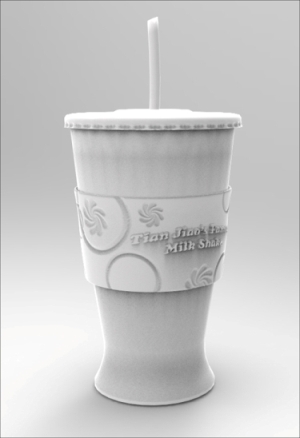For the next project, we are going to texture and render an insulated cup. Let's start by opening up KeyShot, and perform the following steps:
Let's start applying a material to our cup. Perform the following steps:
Click on the Library icon and open the Library window from the viewport.
Go to the Materials tab.
Let's find the material, Clear shiny plastic – red by navigating to
Plastic | Clear | Shiny | Basic.
Drag-and-drop the material onto our cup.
Since most cups have patterns or indentures, let's add a bump map to make our cup look more interesting. Perform the following steps:
Double-click anywhere on our cup to open the Project Editor window.
Go to the Material tab.
Inside the Material tab, go to the Texture tab and activate the bump channel.
Once a new window opens, scroll down to find tile_bump.jpg.
Click on OK.
Once the map is loaded, change...




